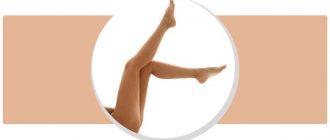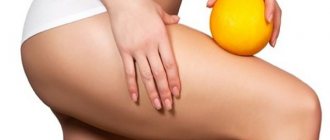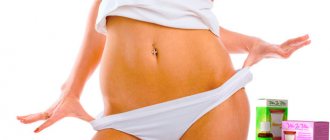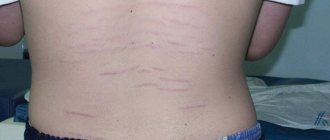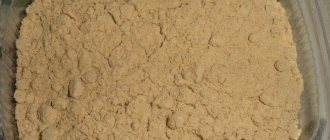Table of contents
- Etiology and pathogenesis
- Genetic predisposition
- Hormonal background
- Microcirculation disorders and inflammation
- Morphological features
- Clinical manifestations
- Principles of treatment
Cellulite (gynoid lipodystrophy, orange peel) is a skin condition associated with the structural and physiological characteristics of subcutaneous fat, which manifests itself as irregularities with a characteristic “mattress” pattern in the thighs, buttocks and abdomen. Many researchers attribute cellulite to the normal state of subcutaneous fat in women, since it occurs, according to some data, in 90% of representatives of this sex.
In our company you can purchase the following equipment for the treatment of cellulite:
- VASER (Solta Medical)
- Thermage (Solta Medical)
- ZWave (Zimmer Medizin System)
- Maximus (Pollogen by Lumenis)
The first signs of gynoid lipodystrophy begin to form after puberty. However, obvious changes become noticeable in women over 30 years of age, often with excess weight (although cellulite also occurs in thin women). Due to the peculiarities of physiology, cellulite in men is very rare.
Despite the fact that gynoid lipodystrophy is not a life-threatening condition, it negatively affects the psycho-emotional sphere of most women, since it is directly related to the aesthetics of appearance and, consequently, self-esteem.
Interestingly, until the second half of the twentieth century, people did not attach much importance to gynoid lipodystrophy. However, in 1973, New York beauty salon owner Nicole Ronsard published the book Cellulite: Those Lumps, Lumps and Lumps You Couldn't Get Rid of Before ( Figure 1 ). The new “disease” attracted the close attention of women, and the book sold 200,000 copies. Thus, Madame Ronsard opened a new era in cosmetology - the era of the fight against cellulite, which does not end to this day.
Rice. 1. The very book that started it all (Amazon)
In what cases do men get cellulite?
You should pay attention to the main sex hormones, male and female. In men it is testosterone, in women it is estrogen. In both, these hormones are present simultaneously, but in different proportions.
Estrogens
The prerequisite for the development of cellulite in humans is estrogen. Men usually have low estrogen levels, so if they overeat and lead a sedentary lifestyle, they usually become obese, with signs of obesity. But this condition is not yet evidence of cellulite manifestation. There is a lack of an important component for this – estrogen.
Men can also have high estrogen levels. It increases as a result of the process of aromatization - the conversion of testosterone to estrogen. In this case, cellulite will begin to actively appear. The presence of two main factors is enough - obesity and physical inactivity.
Of course, age-related changes and other circumstances play an important role. But increasing your body mass index and sedentary lifestyle are key.
It’s worth stopping at old age too. In adulthood, men undergo increased conversion of testosterone to estrogen. Accordingly, the risk of cellulite is high.
Fat cells are not a dormant store of fat - they secrete several hormones, one of which is estrogen. The more fat cells a man (or woman) has in his body, the more estrogen is produced by those fat cells.
If you are overweight, it is the fat cells that produce estrogen, which is necessary for the development of cellulite.
Gynecomastia
The same processes that lead to cellulite in men can also lead to the development of gynecomastia (deposition of fat in the subcutaneous layer of the breast). The culprits are excess estrogen in the male body and obesity.
Estrogen stimulates the development of breast tissue and the deposition of fat around it, including in men.
Estrogen-like substances
Xenoestrogens and phytoestrogens contribute to the appearance of cellulite in men.
Some man-made chemicals, known as xenoestrogens, act as estrogen-like substances in the body and disrupt endocrine balance. Bisphenol A (BPA) and phthalates are known examples of xenoestrogens. These substances are present in common everyday items, plastics, and food packaging.
Some foods and drinks also contain high amounts of estrogen-like substances called phytoestrogens.
Soy, avocado, rice, beer are well-known examples of foods containing phytoestrogens.
All of these estrogen-like substances can have an estrogenic effect on the body and lead to the formation of cellulite, with phytoestrogens being more benign, while xenoestrogens are dangerous to health.
Hormonal background
Estrogens play an important role in the etiopathogenesis of gynoid lipodystrophy. The corresponding hormonal background with a predominance of estrogen, characteristic of the female body, activates lipogenesis (formation of adipose tissue) and inhibits lipolysis (destruction of adipose tissue), which leads to hypertrophy of subcutaneous fat. This explains the high prevalence of cellulite in women and the exacerbation of this condition during pregnancy, breastfeeding, menstruation and when taking certain oral contraceptives.
What to do
Cellulite in men rarely causes anxiety or panic. The stronger sex is rather uncritical of its body. However, if this defect bothers you so much that you are ready to take specific measures, then you will need to spend less effort than the weaker sex.
In case of mild manifestations of cellulite, you should take measures to prevent physical inactivity and exclude fatty, smoked, fried and foods rich in simple carbohydrates from your diet.
Only advanced cellulite with severe abdominal obesity requires serious intervention for medical reasons. For these purposes, liposuction, electrolipolysis or hormonal therapy in case of endocrine pathology are used.
Cellulite in men is an absolutely safe and barely noticeable visual phenomenon, which can be gotten rid of without putting as much effort as in women. The main thing is not to bring yourself to extreme levels of obesity and not to allow extremes in the development of diseases that lead to pathology of the reproductive and hormonal systems.
Microcirculation disorders and inflammation
This theory of the etiopathogenesis of gynoid lipodystrophy is based on impaired microcirculation of blood and lymph in the subcutaneous fat. In the area of the hips and buttocks, lymphatic drainage and blood circulation are hampered, which contributes to chronic swelling of the subcutaneous fat, which, in turn, leads to a sluggish inflammatory process.
Four stages of development of gynoid lipodystrophy have been proposed:
- Changes in capillary-venular and lymphatic permeability, as well as capillary ectasia (persistent dilation of microvessels), intercapillary and interadipose edema.
- Development of metabolic changes with hyperplasia and hypertrophy of reticular structures.
- Proliferation of collagen fibers with the formation of fatty micromodules around adipocytes.
- Development of sclerotic changes and formation of fatty macromodules.
Is this only a women's problem?
Just like for a woman, being overweight does not add attractiveness to a man. Today, a brutal man with pumped up figures is considered the standard of beauty and sexuality.
Reluctance to visit sports complexes, laziness and poor self-care inevitably lead to excess weight. But why is cellulite in men considered quite rare?
First you need to understand what the bumpy manifestations on the hips and buttocks are. Everyone undoubtedly knows what cellulite looks like: the dermis becomes loose and covered with unaesthetic bumps.
To understand why this phenomenon develops, it is necessary to study the structure of the skin:
- The first layer of skin is considered to be the epidermis;
- after it comes the dermal structure , which includes capillaries and larger blood arteries, nerve fiber end receptors, hair follicles and sweat-secreting glands;
- the next layer is the hypodermis. Along its entire surface there are chambers that are separated from each other by walls of connective tissue.
The depressions are filled with fat cells (adipocytes), which increase in volume when the concentration of fat in the body increases.
As a result, the resulting excess fluid puts pressure on the first two layers of skin and protrudes on the surface of the body in the form of bumps. This process leads to disruption of microcirculation and lymphatic drainage, the body accumulates waste, which contributes to the severity of cellulite.
Only 10% of women were lucky enough to avoid such “wealth” as cellulite. However, according to statistical data, the stronger sex of humanity also faces the problem, albeit in very rare cases.
Many scientists are inclined to believe that healthy men have half as many fat cells in their bodies as the weaker sex. In addition, the structure of their connective tissue is also different from that of women.
The tissue fibers are arranged in the form of crossed columns, which allows adipocytes to be evenly distributed in the structure of the connective tissue without creating a bumpy relief on the surface of the epidermis.
For this reason, it is almost impossible to visually examine the “orange peel” on a man’s body. Everyone is proud of this fact and assures the fair sex that there is no “breeches” effect on their skin.
However, in fact, cellulite occurs in men, so the problem cannot be attributed only to women, it affects both sexes, only to varying degrees.
Morphological features
An MRI examination of people of both sexes showed that in women with gynoid lipodystrophy the number of fibrous septa in the subcutaneous fat is higher than in women without cellulite and men. Also, with cellulite, a greater thickness of fibrous septa was noted.
Rice. 2. Morphology of normal skin ( Normal Skin ) and skin with signs of gynoid lipodystrophy ( Cellulite ). There is a noticeable partial pressing of subcutaneous fat into the dermis, as a result of which the thickness of the dermal layer decreases, and characteristic “waves” appear on the skin (Manhattan Dermatology Specialists)
Prevention
Without a doubt, all of the above methods have gained great popularity in the fight against cellulite in men.
However, long-term effectiveness cannot be achieved unless you completely change your usual lifestyle to its correct course.
Experts give the following preventive recommendations:
- Diet. If the presence of cellulite is medically proven, the man is advised to change his diet.
The daily menu should include fresh vegetables and fruits, boiled chicken and beef, seafood, and low-fat dairy.These products reduce the accumulation of fat mass. The brevity of meals should not be less than 6 times a day in small portions. Such measures will reduce the volume of the stomach and get rid of the annoying feeling of hunger. Before starting a diet, it is advisable to consult a specialist.
- Drink plenty of fluids . Every nutritionist considers it beneficial for the body to drink more than 2 liters of cold purified water, decoctions based on medicinal herbs or natural vegetable and fruit juices per day.
- Rejection of bad habits . Nothing will rid a man of a “beer” belly faster than giving up an intoxicating drink. Alcohol and nicotine are also harmful to your skin.
- Physical exercise .
The main reason for disruption of the structure of the subcutaneous layers in the stronger sex is considered to be inactivity. Therefore, it is recommended to find free time for sports, provide your body with feasible physical activity, walk more often in the fresh air, and, if possible, ride a bicycle. - Cold and hot shower . This procedure should be performed daily, then rub your body with a terry towel. This will help increase blood circulation, prevent congestion in the body and the formation of “orange peel” on the skin.
- Comfortable clothes . Selection of clothes is carried out in accordance with your size. When wearing it, a person should feel comfortable and comfortable.
- Positive emotions . Any stress contributes to serious changes in the body, including the development of cellulite formations, so a positive mood is the best solution to the problem.
Clinical manifestations
Gynoid lipodystrophy is manifested by uneven skin of the buttocks, thighs and abdomen with a characteristic “mattress” pattern ( Fig. 3 ). There are different methods for determining the severity of cellulite - from a simple pinch test to ultrasound and MRI.
Nuremberg-Müller scale (pinch test) - a piece of skin is pinched between the thumb and index finger. As a result, you can see the following picture:
- Stage 0 - when the skin is compressed into a fold, muscle tension and a change in body position, the surface remains smooth.
- Stage 1 - when the skin is compressed, bumps and pits appear, but when standing up, the surface is leveled.
- Stage 2 - the pits are visible in a standing position, while in a lying position the surface is flat.
- Stage 3 - the “orange peel” is visible all the time, regardless of muscle tension and body position.
Cellulite Severity Scale ( CSS ) - takes into account 5 parameters, each of which is scored 0-3 points. The number of pits (1), their depth (2), visual unevenness of the skin (3), the degree of sagging (4) and the result on the above-described Nuremberg-Müller Scale (5) are determined. A result of 1-5 points is interpreted as mild cellulite, 6-10 - moderate, 11-15 points - severe.
Ultrasound allows you to assess the thickness and quality of connective tissue, as well as monitor the dynamics of swelling in cellulite. The severity of protrusion of subcutaneous fat into the dermis is associated with the severity of cellulite, which is especially visible at a frequency of 20 MHz.
Laser Doppler flowmetry is useful for assessing cutaneous microcirculation in areas of gynoid lipodystrophy. There is evidence of the use of two-dimensional MRI images in the diagnosis of cellulite, but this method is more suitable for scientific research. In routine clinical practice, the pinch test and, if necessary, ultrasound are sufficient.
Rice. 3. Signs of gynoid lipodystrophy (cellulite) on the buttocks and thighs (Clinicalgate)
Principles of treatment
Despite the fact that gynoid lipodystrophy occurs in women of any body weight, excess weight increases its manifestations. Therefore, a common way to combat cellulite is to normalize body weight - diet, nutrition control, moderate physical activity.
Anti-cellulite cosmetics
Today, many special cosmetics are produced for the treatment of cellulite. Most of them contain various algae (spirulina, bladderwrack), caffeine, bamboo extract, chaga extract (tree mushroom), horse chestnut and other ingredients. All of them, one way or another, enhance lipolysis, have a lymphatic drainage effect, stimulate microcirculation, reduce swelling and trigger collagen production.
Caffeine, theobromine and theophylline locally increase the temperature of subcutaneous fat, resulting in the process of lipolysis. In addition, they inhibit enzymes responsible for the accumulation of fat in cells and activate digestive enzymes, which further enhances lipolysis. Therefore, cocoa extract is widely used in anti-cellulite products, both professional and intended for home care.
Ginkgo biloba leaf extract contains bioflavonoids and terpenes. They improve local microcirculation, inhibit platelet growth factor, reduce capillary permeability and improve the tone of vascular walls.
Most cosmetics are designed to improve the appearance and texture of the skin. However, they do not affect the connective tissue septa and, therefore, do not improve the condition in advanced cases.
Massage
Massage stimulates microcirculation, reduces swelling, “breaks up” fat deposits and is generally a useful procedure for cellulite. It can be either manual or hardware, supplemented with special massage cosmetics or performed on dry skin.
The absolute leaders among massage anti-cellulite products are creams and oils. Cream forms provide a tighter grip of the massage therapist’s fingers with the underlying tissues - when performing kneading and defibrosing techniques, this allows for better treatment of the desired area. However, with more aggressive techniques, the cream form can cause skin trauma. Oils improve hand glide, which prevents injury. On the other hand, less adhesion does not allow you to thoroughly work out the entire layer of fat deposits when working with excess volumes.
Dietary supplements
Today, many dietary supplements and weight loss products are produced that are taken orally. Despite the conflicting information obtained in studies, in general, the following are considered useful for cellulite: grapes (Vitis vinifera), Asian centella (Centella asiatica), ginkgo biloba (Ginkgo biloba), sweet clover (Mellilotus officinalis), chokeberry juice, etc.
Hardware techniques
Treatment of cellulite is one of the most difficult problems in aesthetic medicine. Cosmetics, massage and dietary supplements practically do not provide a visual effect and can only stop the development of cellulite; in other words, using anti-cellulite cosmetics it is impossible to transform stage 2 cellulite into stage 5 cellulite. and cellulite from stage 1 to stage zero. This is due to the fact that cosmetics, massage and dietary supplements have virtually no effect on the connective tissue strands and fatty macromodules, which are the cause of the external manifestations of cellulite - lumps and depressions.
The only way to significantly reduce the external signs of cellulite is to influence the subcutaneous fat with the physical factors of hardware procedures. Here are the most effective ones:
- Liposuction . Certain liposuction techniques involve cutting connective tissue cords in the subcutaneous fat layer. These techniques are complex and traumatic, but, perhaps, surgical liposuction is the only way to 100% destroy the cause of visible manifestations of cellulite. Moreover, liposuction works in cases where other hardware techniques are ineffective, namely in stage 3 cellulite. The most advanced type of liposuction for the treatment of cellulite is VASER-associated liposuction. VASER uses ultrasound, which “cuts” connective tissue cords in the subcutaneous layer, and also transfers fat cells into an emulsion, which is then aspirated. Because VASER destroys connective tissue through a special mode of ultrasound delivered through special probes, this type of liposuction can be used in the subcutaneous layer with much higher safety than conventional mechanical or laser-assisted liposuction. VASER-associated liposuction has one drawback - the need to wear compression garments for 1.5–2 months from the date of surgery. The advantage is the maximum possible efficiency of the operation and effectiveness, which is achieved with a single use.
- RF lipolysis . RF energy is one of the few types of energy that can penetrate subcutaneous fat and heat tissue. RF devices with sufficiently high power and a special design of electrodes effectively heat subcutaneous fat, influencing two parts of the pathogenesis of cellulite. First, the heating caused by RF energy stimulates lipolysis - the intracellular breakdown of triglycerides and their release into the bloodstream and lymphatic system. Secondly, heating triggers the remodeling of structural proteins in the connective tissue cords of the pancreas, resulting in an increase in their elasticity and “softening” of the adipose tissue. The Maximus hardware procedure can be considered the most advanced method of treating cellulite using RF. The Maximus device uses unique TriLipo technology, which combines multipolar RF exposure and DMA - dynamic muscle activation. In addition to intense but comfortable heating, Maximus stimulates local lipolysis through muscle contraction and allows you to get rid of adipocyte metabolic products through intense lymphatic drainage.
- Treatment of cellulite using the Thermage CPT device is also very effective. Unlike other RF devices, Thermage heats the PFA to a temperature above 60 degrees, but does it instantly. The result of this effect is the partial destruction of old collagen in connective tissue cords and the launch of the synthesis of new structural proteins.
- Shock wave therapy . This type of specific effect allows you to “soften” the connective tissue cords in the subcutaneous fat when they absorb the energy of the shock wave. The Z Wave device is specially designed for cellulite therapy. Unlike other shock wave therapy machines, it is equipped with handles with a large tip size, which allows you to treat large areas (thighs and buttocks) at high speed.
Questions from our users:
- cellulite treatment exercises
- cellulite treatment in the clinic
- how to get rid of cellulite in men
- cellulite hardware procedures
Gynoid lipodystrophy is not cellulite.
Menopause
Climax
14916 March 23
IMPORTANT!
The information in this section cannot be used for self-diagnosis and self-treatment.
In case of pain or other exacerbation of the disease, diagnostic tests should be prescribed only by the attending physician. To make a diagnosis and properly prescribe treatment, you should contact your doctor. Gynoid lipodystrophy: causes of occurrence, what diseases it occurs with, diagnosis and treatment methods.
Women's magazines are full of headlines about cellulite, and the phrase “orange peel” is not always associated with citrus fruits.
But in fact, what we used to call cellulite has another name - gynoid lipodystrophy. This type of lipodystrophy is based on a violation of metabolic processes in subcutaneous fat. Fat is distributed unevenly under the skin, which leads to the formation of uneven surfaces on the skin.
Lipodystrophy occurs in 85-95% of women, which is associated with the structural features of subcutaneous fat and the influence of female sex hormones.
So,
- gynoid lipodystrophy
is a non-inflammatory structural change in subcutaneous fat in women, the key element in the development of which is local hypertrophy of adipocytes (adipose tissue cells). Gynoid lipodystrophy is not included in the International Classification of Diseases, 10th revision (ICD-10), since it is not considered a disease; - cellulitis is an acute
soft tissue infection characterized by diffuse serous inflammation with hyperemia, swelling and local tenderness. In the typical course of uncomplicated cellulite, the subcutaneous fatty tissue with the underlying skin is affected, but in rare cases, the inflammatory process can spread to deeper structures (fascia, muscles).
In men, fat deposits are distributed predominantly in the upper body, and in women - in the thighs and lower abdomen.
The fat layer itself is thicker in women, and the skin, on the contrary, is thinner. The basis of subcutaneous fat is made up of connective tissue fibers (mainly collagen). The fibers form partitions, forming a cellular structure. In men, these cells are located diagonally to the surface of the skin, and in women - perpendicularly. Therefore, the accumulation of fat practically does not change the skin texture in men, unlike the female figure.
It is worth noting that the structure of subcutaneous fat is determined genetically and is different for all women. There is no direct connection between excess body weight and lipodystrophy; it also develops in thin women.
There are several stages of cellulite development.
Stage 1 (“soft cellulite”).
External changes are very weakly expressed. Slight swelling of the tissues appears, bruises and scratches heal more slowly than usual, and the subcutaneous fat layer is soft when palpated. Changes occur at the cellular level. The permeability of small vessels increases, fluid is retained in the intercellular space.
2nd stage. Swelling in the affected areas increases,
an “orange peel” effect appears, noticeable when the muscles are tense or the skin is compressed. The elasticity of the skin decreases, fat deposits become denser, and the circulation of blood and lymph in the capillaries becomes more difficult.
Stage 3 (“hard cellulite”).
The “orange peel” effect occurs at rest, in any body position. Swelling of the subcutaneous tissue is very pronounced. The disruption of microcirculation increases, and bruises appear on the skin. The connective tissue thickens and grows, accumulations of fat cells form nodes.
Stage 4 (nodal).
Large nodes are easily palpable and can form conglomerates that are painful to the touch. Swelling is pronounced, which further interferes with normal blood circulation and intensifies pathological changes that began in the early stages. Stage 4 lipodystrophy requires mandatory treatment.
Complications of gynoid lipodystrophy:
— injured nodes easily suppurate, forming abscesses that are difficult to treat; - enlarged nodes can compress the lymphatic vessels, thereby preventing the outflow of lymph.
Lipodystrophy can take several forms.
Hard cellulite.
As a rule, it is noticeable only when the skin is folded - the “orange peel” effect is visible. Often accompanied by stretch marks - striae. This form of lipodystrophic changes mainly occurs in girls and young women who lead an active lifestyle.
Flaccid cellulite.
Characterized by sagging skin. The location of “cellulite” lesions changes with changes in body position. Often accompanied by decreased muscle tone. This type of cellulite occurs in women over 40, especially after sudden weight loss.
Edema cellulite.
After pressing on the skin in the affected areas, a dimple (depression) remains for several seconds. The skin becomes thinner and pale. This type of cellulite is often accompanied by swelling and a feeling of heaviness in the legs.
Mixed cellulite.
The most common form. It is a combination of different types of “cellulite”.
Causes of cellulite
The occurrence of gynoid lipodystrophy is influenced by a number of factors.
- The most common include hereditary predisposition and hormonal imbalance. Causes of hormonal imbalance include pregnancy, the postpartum period, menopause, depression, stress and taking birth control medications.
Changes in the structure of subcutaneous fat can be caused by low levels of estrogens - female sex hormones.Decreased production of thyroid hormones can also cause the appearance of cellulite.
- Changes in pancreatic function affect lipid metabolism, which leads to impaired fat storage.
- With varicose veins, the circulation of blood and lymph changes, swelling appears and the pathological process in the subcutaneous fatty tissue starts.
- Kidney diseases affect the water-salt balance, which, as a rule, leads to fluid retention in tissues and provokes changes in the structure of subcutaneous fat.
- With obesity or a sedentary lifestyle, the accumulation of fat in fat cells - adipocytes increases, and the lack of physical activity impairs blood circulation and contributes to the progression of the lipodystrophic process.
- Rapid weight loss or significant fluctuations in body weight negatively affect the elasticity of subcutaneous structures and also contribute to the development of gynoid lipodystrophy.
Thus, the appearance of gynoid lipodystrophy may accompany the following conditions:
- Obesity.
- Hypothyroidism.
- Chronic pancreatitis.
- Varicose veins.
- Diseases of the urinary system (glomerulonephritis, chronic renal failure).
- Polycystic ovary syndrome.
- Depressive disorders. And others.
Which doctors to contact
Most often, women are concerned about the appearance of their skin, and they turn to cosmetologists and plastic surgeons. However, doctors of different specialties can treat the immediate cause of this pathology:
- ;
- nephrologist;
- ;
- psychiatrist;
- gastroenterologist.
Diagnostics and examinations
To clarify the diagnosis, the doctor may prescribe:
- Blood test for thyroid hormones (thyroxine - T4, triiodothyronine - T3, thyroid-stimulating hormone - TSH), antibodies to thyroid peroxidase, antibodies to thyroglobulin.

